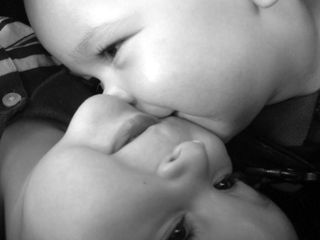Identical Twins' DNA Varies

Identical twins may not be nearly as identical as once believed.
Research in 2005 found that identical twins differ in how their genes express themselves. Now scientists have learned that all identical twins may actually differ genetically from their partners to some degree.
As indistinguishable as identical twins often appear, scientists have long known they all differ somewhat from their partners. At times such discrepancies are relatively superficial — for instance, identical twins do not have identical fingerprints. Other times such differences are tragically obvious — one may develop the rapid aging disoder progeria while the other may not.
Still, researchers have largely assumed that identical twins are genetically identical, reasoning that any variations between them were due to solely environmental factors. For instance, the fingerprints of identical twins diverge because they each experience slightly different conditions in their shared time in the womb.
Now scientists find that when it comes to the genetics of identical twins, unexpectedly "there in fact are tiny differences and that they are relatively common," said researcher Jan Dumanski, a molecular geneticist at the University of Alabama at Birmingham.
In the new study, researchers analyzed 19 pairs of identical twins. Although they did possess nearly identical genomes, closer study revealed they often differed in the number of copies of individual gene segments. For instance, one twin might be missing a segment, or possess more copies of that segment than the other twin.
Such variations could explain why one identical twin can suffer from a disorder while the other remains healthy. Researcher Carl Bruder expected that even identical twins that appear completely alike harbor "copy number variations" when it comes to at least one site in their genomes.
Sign up for the Live Science daily newsletter now
Get the world’s most fascinating discoveries delivered straight to your inbox.
Identical twins emerge when a zygote — the fertilized egg that develops into an embryo — splits into two embryos. As such, they should have the same genomes. The researchers speculate that as the cells making up each embryo divide over and over again during development in the womb, mistakes occur as dividing cells shuffle copies of their DNA into daughter cells.
But genetic differences between identical twins might also accumulate after development over a twin's life as well. "I think all our genomes are under constant change," Bruder told LiveScience.
Aside from understanding more about identical twins and other multiples, "by uncovering these small genetic differences in identical twins where one of them is sick, we have a way of tying specific genetic changes to the genesis of common diseases," Bruder added. He noted they are now looking at identical twins to study aging, obesity and immunological disorders.
Charles Lee, Harvard Cancer Center's director of cytogenetics, noted that genetic studies of identical twins could help rapidly identify which genes are linked with a specific disorder, "because everything else is the same."
Bruder, Dumanski and their colleagues will detail their findings in the March issue of the American Journal of Human Genetics.

Most Popular

